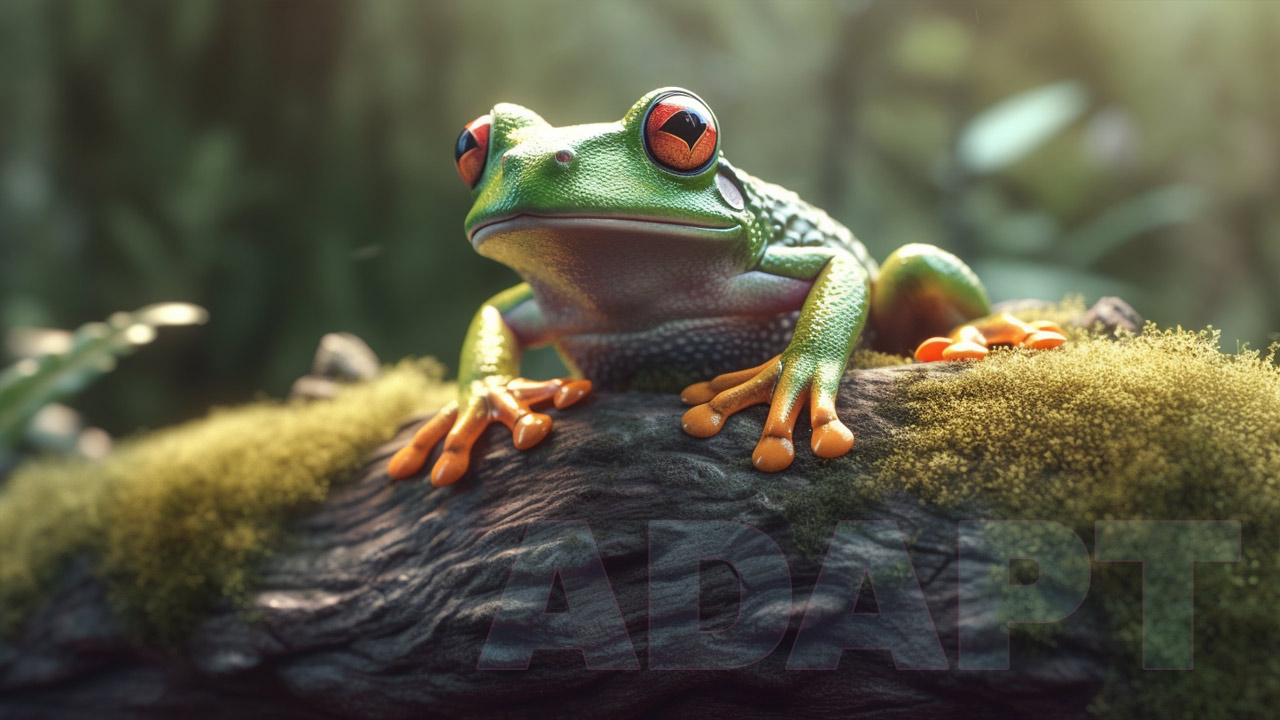In today’s fast-paced and ever-evolving business landscape, it is crucial for organizations to be adaptable and resilient. One inspiring example to learn from is the tree frog, a creature that has mastered the art of adapting to its environment. In this article, we will explore the various ways the tree frog’s approach can be applied to modern business practices.
The Tree Frog’s Secrets to Adaptation
The tree frog has developed several traits and behaviors that enable it to thrive in diverse environments. These traits can serve as valuable lessons for businesses looking to build a more flexible and agile organization.
Camouflage
- Tree frogs are experts in blending in with their surroundings, using their ability to change colors to avoid predators.
- Businesses can adopt a similar strategy by remaining flexible and agile, allowing them to blend in with their industry and adapt to new trends or changes in consumer behavior.
Versatile limbs
- Tree frogs have evolved limbs with adhesive pads, enabling them to climb and grip surfaces with ease.
- In business, companies must develop versatile skill sets and cultivate a workforce with diverse capabilities, allowing them to navigate complex and unpredictable environments.
Efficient use of resources
- Tree frogs have developed efficient ways to utilize limited resources, such as absorbing water through their skin and using it to maintain body temperature.
- Companies should aim to optimize their use of resources, minimizing waste and maximizing returns on investment.
Embracing Change in Business Strategy
Adapting to change is a crucial skill for any business, and there are several strategies that can help organizations become more agile and resilient.
Continuous learning
- Companies must prioritize learning and development, ensuring that employees are equipped with the latest knowledge and skills to navigate a constantly evolving landscape.
- Encourage ongoing education and training
- Facilitate knowledge sharing and collaboration within the organization
Embracing innovation
- Innovation is key to thriving in a rapidly changing environment. Businesses must be willing to explore new ideas and adapt existing processes and strategies.
- Cultivate a culture that embraces experimentation and creative problem-solving
- Invest in research and development to stay ahead of the competition
Building a flexible workforce
- A diverse and agile workforce is essential for businesses to adapt to change quickly and effectively.
- Hire employees with a diverse range of skills and experiences
- Encourage cross-functional collaboration and multi-disciplinary teams
Overcoming Resistance to Change
Resistance to change is a natural human tendency, but it can be a significant barrier to organizational adaptability. Here are some strategies to help overcome resistance and promote a culture of adaptability:
Communicate effectively
- Clear and consistent communication is essential for managing change.
- Keep employees informed about the reasons for change and its potential benefits
- Address concerns and provide opportunities for feedback
Empower employees
- Empower employees to take ownership of change by involving them in decision-making processes.
- Seek input and ideas from employees at all levels
- Recognize and reward those who contribute to positive change
Foster trust
- Trust is vital for overcoming resistance to change.
- Be transparent about organizational goals and strategies
- Show commitment to employees’ well-being and professional development
Bonus: Business Adaption in the Post-Pandemic World
The COVID-19 pandemic has brought unprecedented challenges for businesses worldwide, forcing them to adapt rapidly to a new normal. As we move forward into the post-pandemic world, it is essential for organizations to learn from the tree frog’s approach to adaptability and apply these lessons to thrive in a transformed business landscape.
Remote Work and Digital Transformation
- The pandemic has accelerated the shift towards remote work and digital transformation, making it crucial for businesses to adapt to new ways of working.
- Implement flexible remote work policies and invest in the necessary tools and technology
- Enhance digital infrastructure and prioritize cybersecurity measures
- Foster a culture of effective communication and collaboration in remote teams
Customer Experience and Changing Consumer Behavior
- The pandemic has significantly altered consumer behavior, with a growing preference for online shopping and contactless transactions.
- Optimize e-commerce platforms and ensure a seamless customer experience across all touchpoints
- Embrace digital marketing strategies to reach and engage customers
- Adapt to new customer needs by offering contactless services and enhancing safety measures
Supply Chain Resilience
- The pandemic has exposed vulnerabilities in global supply chains, underscoring the need for greater resilience and flexibility.
- Diversify suppliers and invest in local and regional sourcing options
- Implement advanced supply chain management technologies to improve visibility and tracking
- Develop contingency plans to mitigate the impact of future disruptions
Emphasis on Sustainability and Social Responsibility
- The post-pandemic world has heightened awareness of sustainability and social responsibility, making it essential for businesses to align with these values.
- Prioritize sustainable practices and reduce the organization’s environmental footprint
- Engage in corporate social responsibility initiatives and give back to the community
- Be transparent about sustainability goals and achievements, effectively communicating them to stakeholders
By embracing the tree frog’s adaptive approach and applying these strategies, businesses can successfully navigate the challenges of the post-pandemic world and emerge as stronger, more resilient organizations.
Final Thoughts
Using the tree frog approach to business your businesses adaptation can become more resilient and agile, better equipped to navigate the challenges of a constantly changing environment. Embracing change, learning from the natural world, and fostering a culture of adaptability will ensure that businesses not only survive but thrive in the face of uncertainty.











